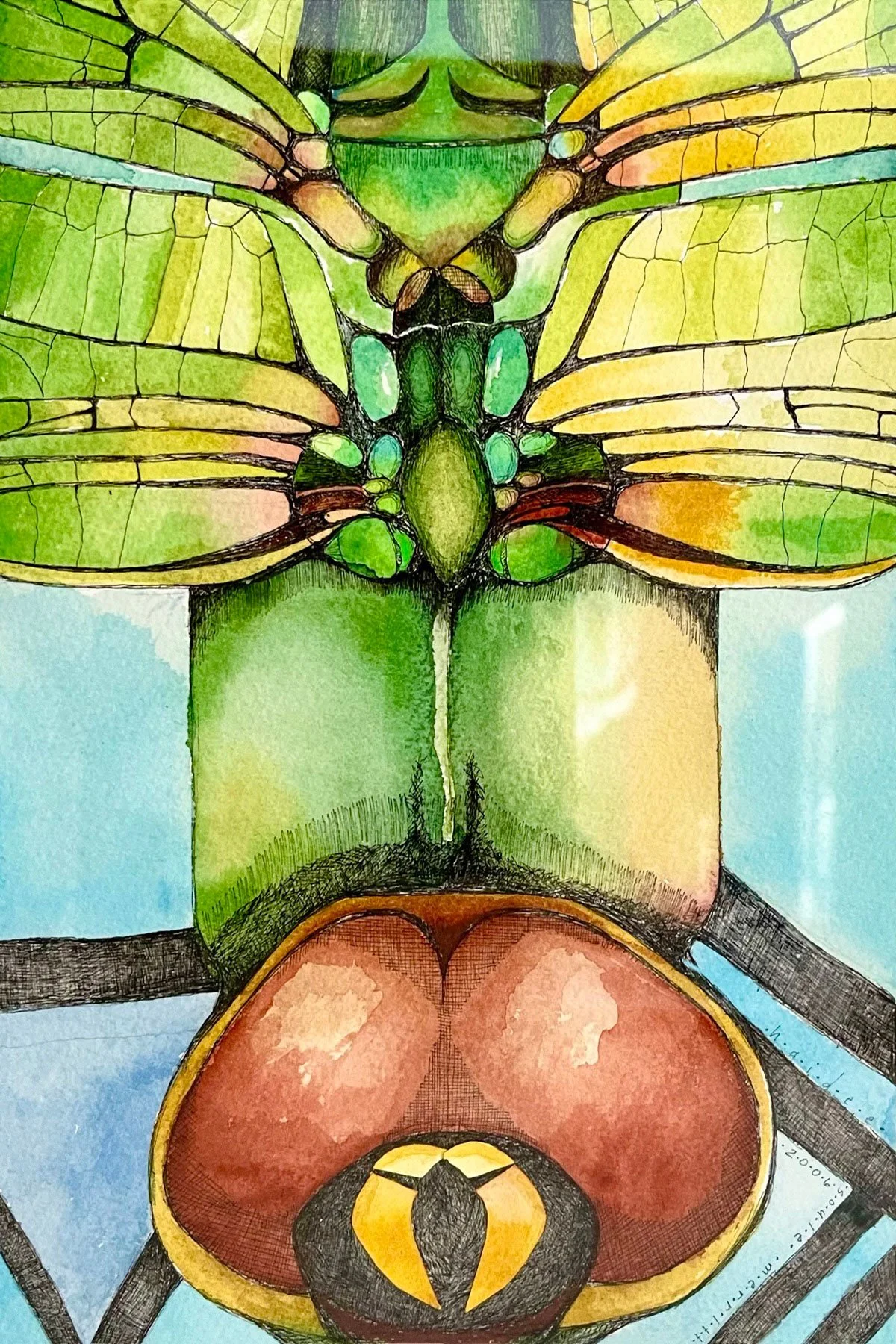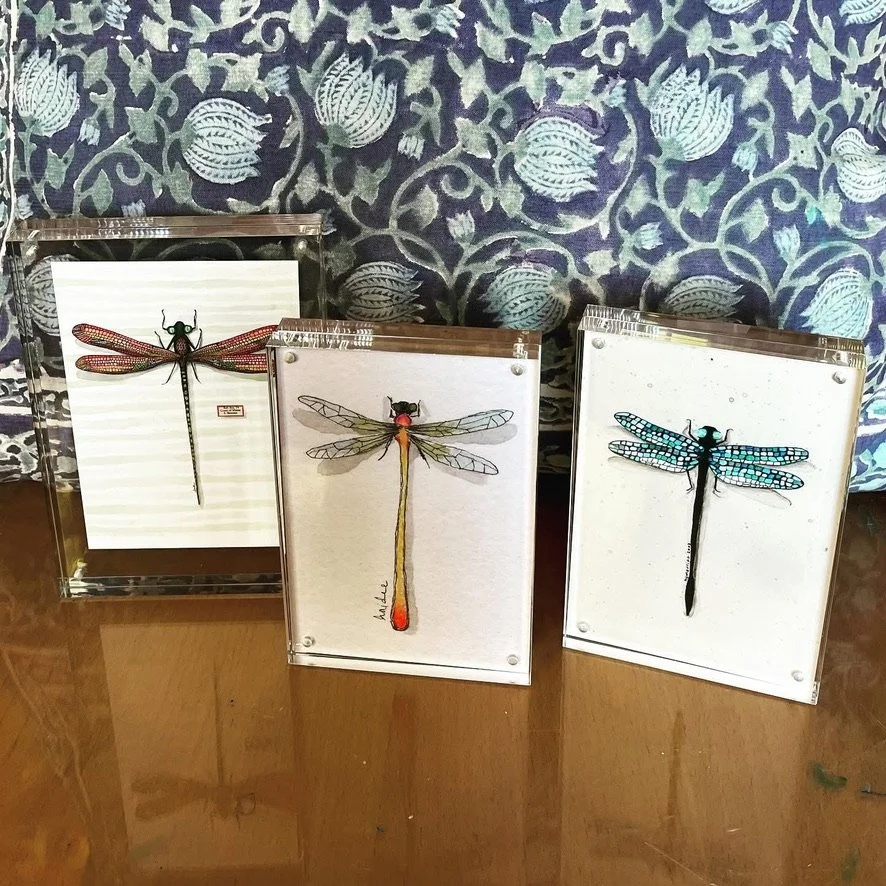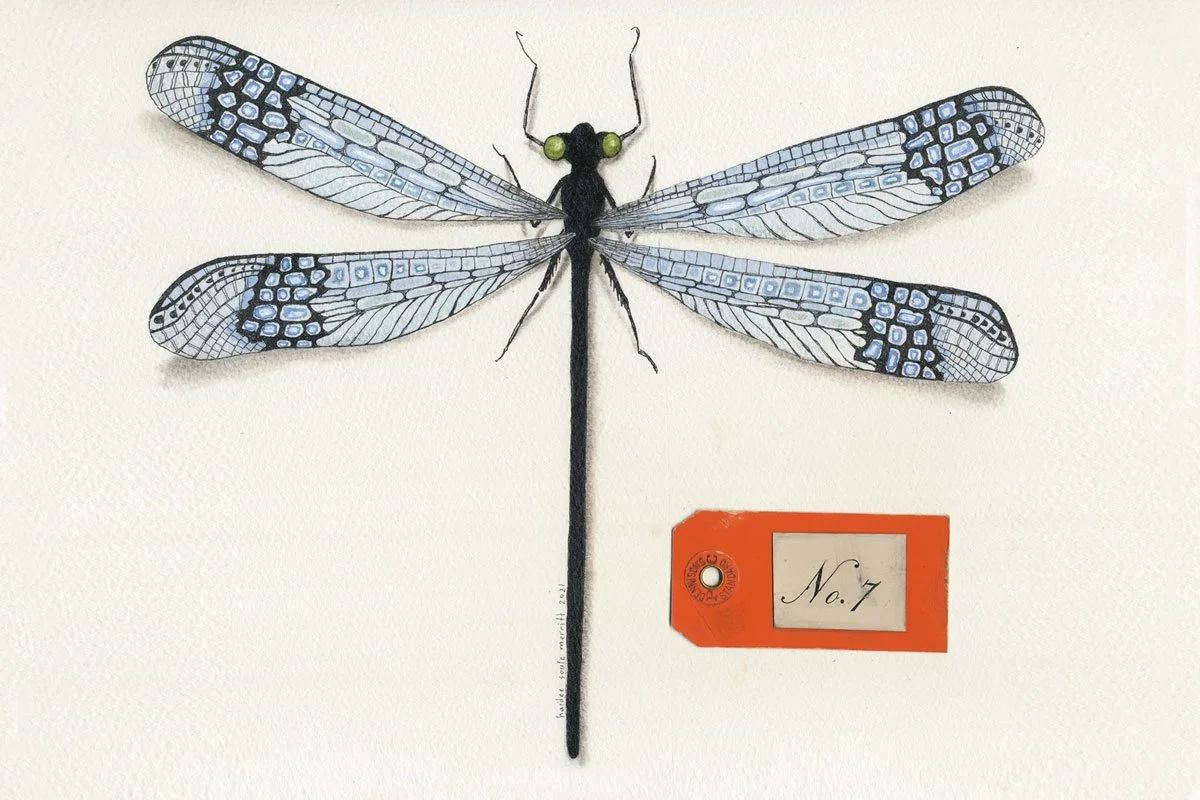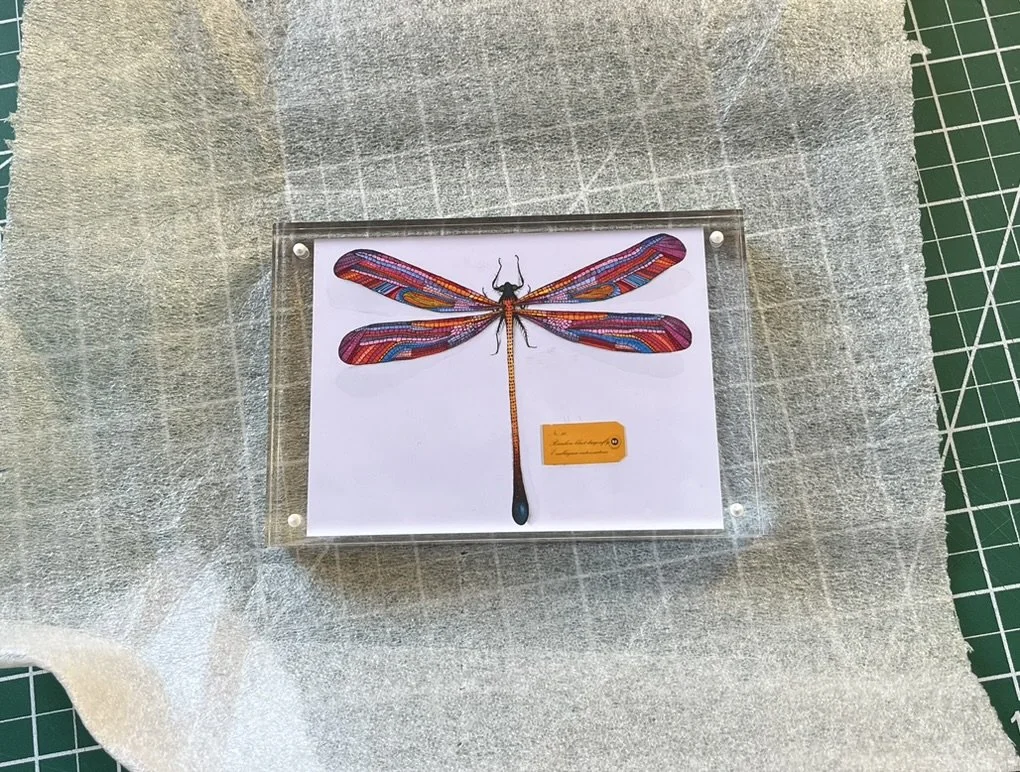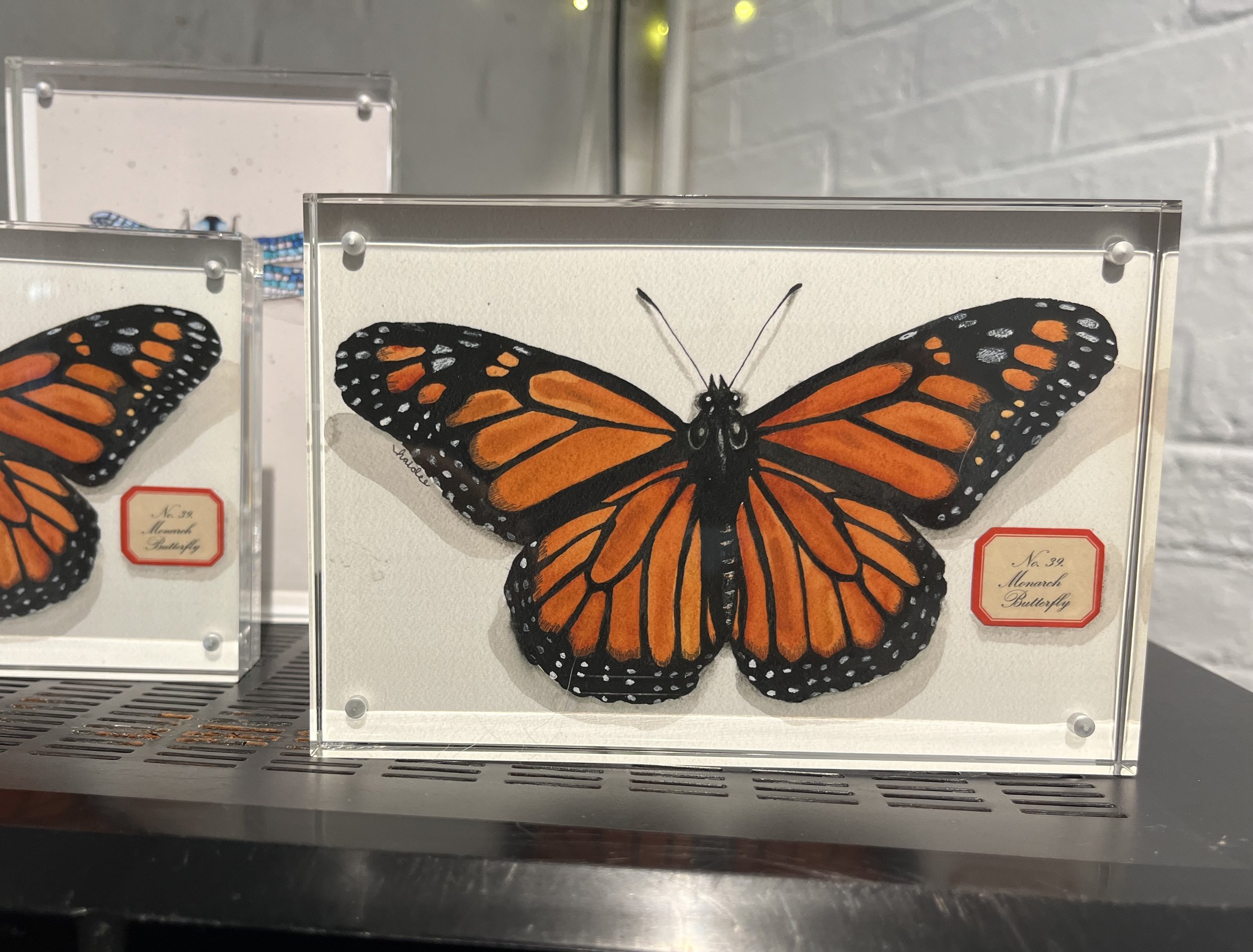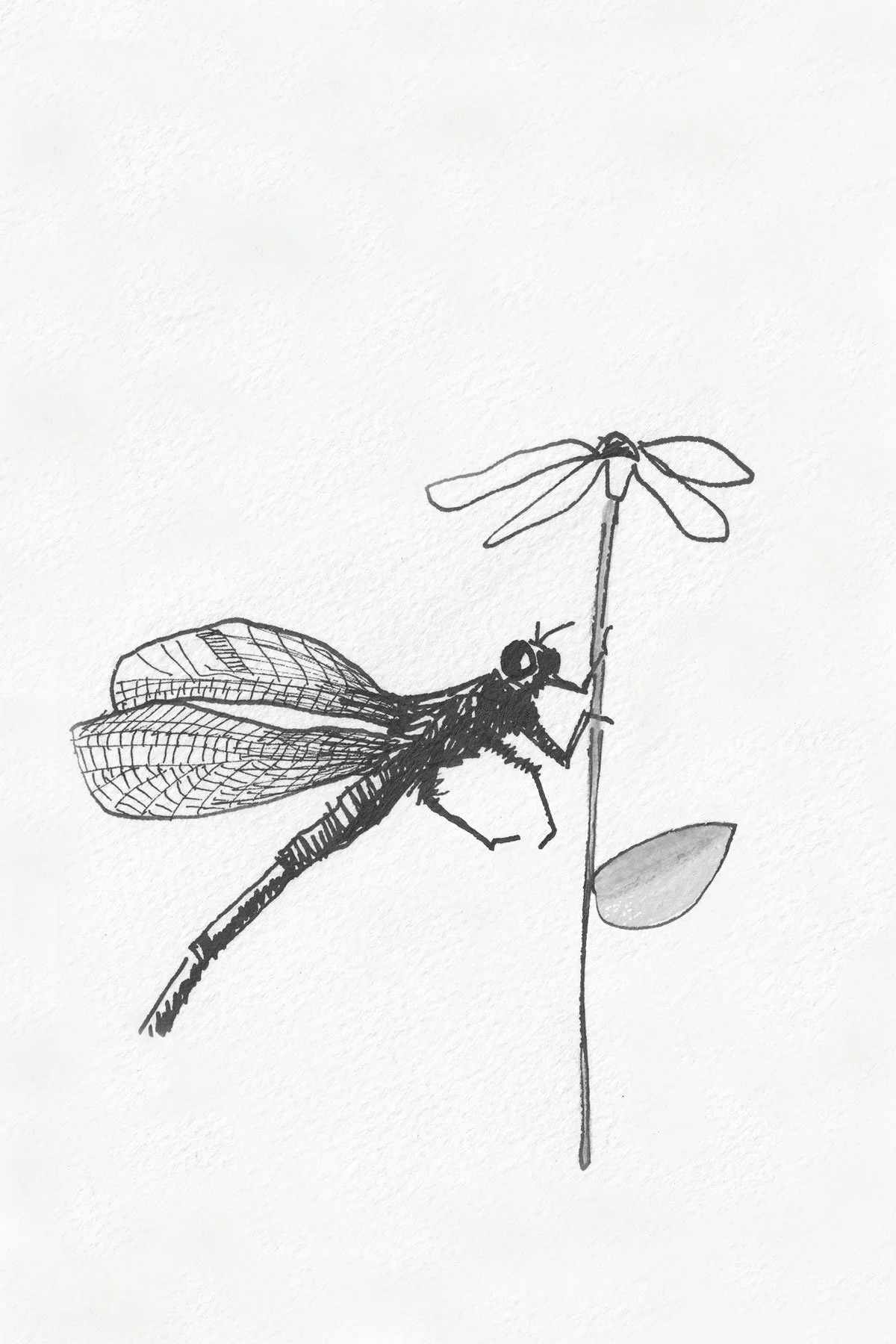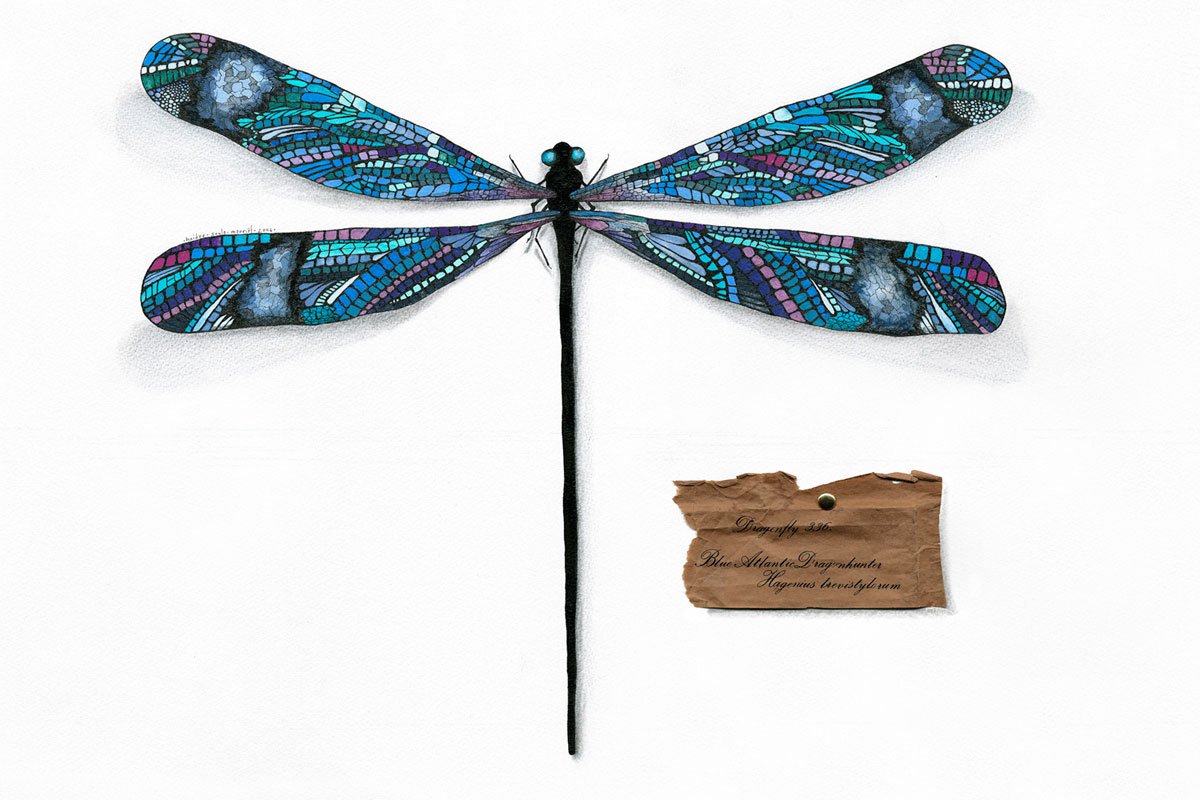Excerpt from Field Notes (E. Nix, 1902):
“Perched vertically against reedgrass, this species exposes its full ventral surface to the canopy—an inversion of the standard perching posture. The underside seems engineered for concealment among fractured light. The copper belly appears to shimmer with movement, like a coin glimpsed underwater.”
I. Ventral Morphology (underside view):
The Copperbelly Glider presents a particularly ornate ventral anatomy—one of the most chromatically complex of the known Corduliidae analogues. This description is based on direct observation of the type specimen, measuring 62 mm in body length, with documentation focused from the labial plate to the anterior third of the abdomen.
II. Head & Mouthparts:
The head appears shielded from below by the extended prementum, pale green and bisected with a vertical ridge. Sub-labial regions show pairs of olive-toned ovoids—likely modified palps or glands. Though mandibular detail is obscured, the overall configuration suggests a predatory orientation typical of anisopterans.
III. Thoracic Underside:
The thorax is vividly colored in sap green and chartreuse, blending toward a warm citrine near the wing hinges. A narrow longitudinal ridge, almost like a keel, runs from the head-thorax junction to the base of the abdomen, acting as both structural reinforcement and color divide.
Notably, small nodules along the mesothoracic sides are raised and shaded in hues ranging from jadeite to pear-green, forming a symmetrical mosaic pattern along the ventral wing muscles. The sclerites directly under the wing bases are tinted in ambergold, with subtle orange halos that bleed into the surrounding tissue like sunset through lace.
IV. Wing Attachments:
Each wing is anchored by an axillary complex with distinct orange-and-gold sclerites. The humeral joints are prominent and edged in saffron yellow. At rest, the folded wings appear to gleam faintly at the base, refracting light into tight ridges. Clusters of lime-green nodal pads—rarely visible from dorsal view—are here clearly seen, likely serving in wing stabilization and rotation during gliding maneuvers.
V. Abdomen (Segments 1–3 visible):
Segment one shows a vertical stripe of moss green, flanked by sun-faded pistachio. Segments two and three swell slightly, with a luminous transition from olive drab to brick red to burnt copper. Segment three terminates in a distinctly bifurcated lobe of rust-orange, edged with onyx black and marked centrally with two elliptical goldenrod eye-spots—positioned like false eyes or mimicry glands.
These ovals, reflective and highly saturated, are hypothesized to serve as anti-predator deception or as part of aerial mate attraction. Their symmetry and high contrast are unique among related taxa.
Summary:
The Copperbelly Glider is a structurally convincing and behaviorally intriguing member of the dragonfly archive, with ventral features suggesting evolved signaling and thermoregulatory roles. It possesses enough distinctive morphology to warrant genus-level classification. Its coloration reads less like camouflage and more like conversation—silent, deliberate, and visible only from below.
Note: High quality archival glicée print on acid-free paper, a method that creates fine art reproductions with exceptional color accuracy and longevity. Pigments-based inks are designed to resist fading and discoloration and capture the finest details and subtle color variations with great precision.
Housed in a 4×6” crystal-clear acrylic specimen block, its 1” depth allows freestanding display. Each piece is designed to exhibit on desk or shelf.
Fly Design uses a practice known as entonology — the study of fictitious insects — to reimagine the natural world through scientific storytelling and poetic design.

